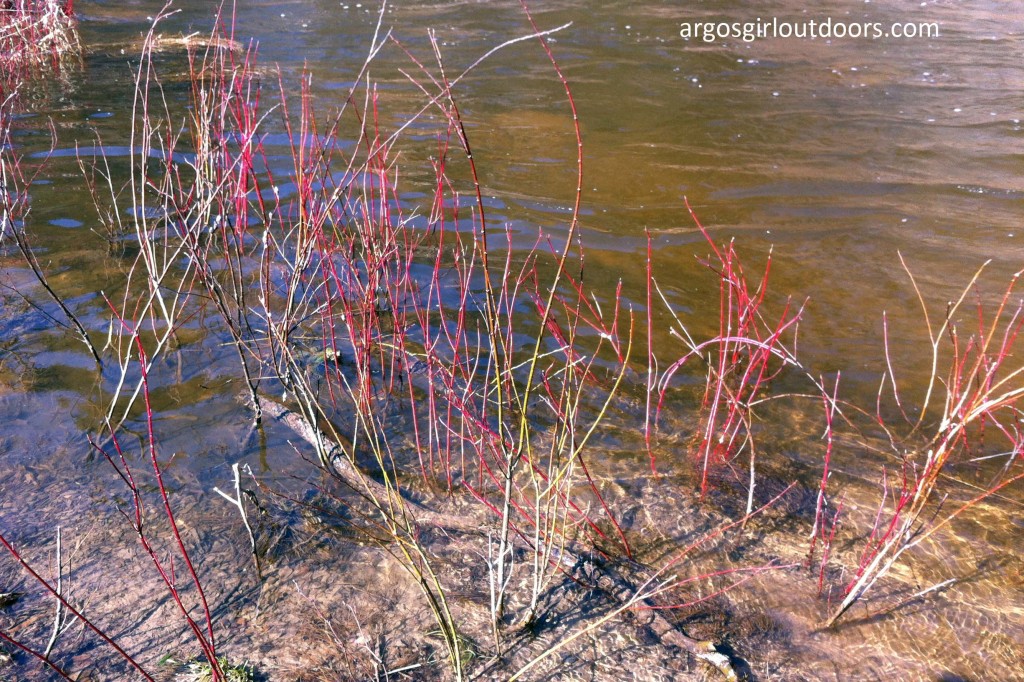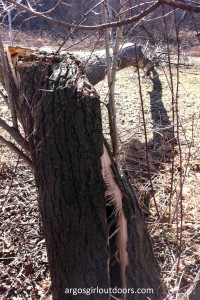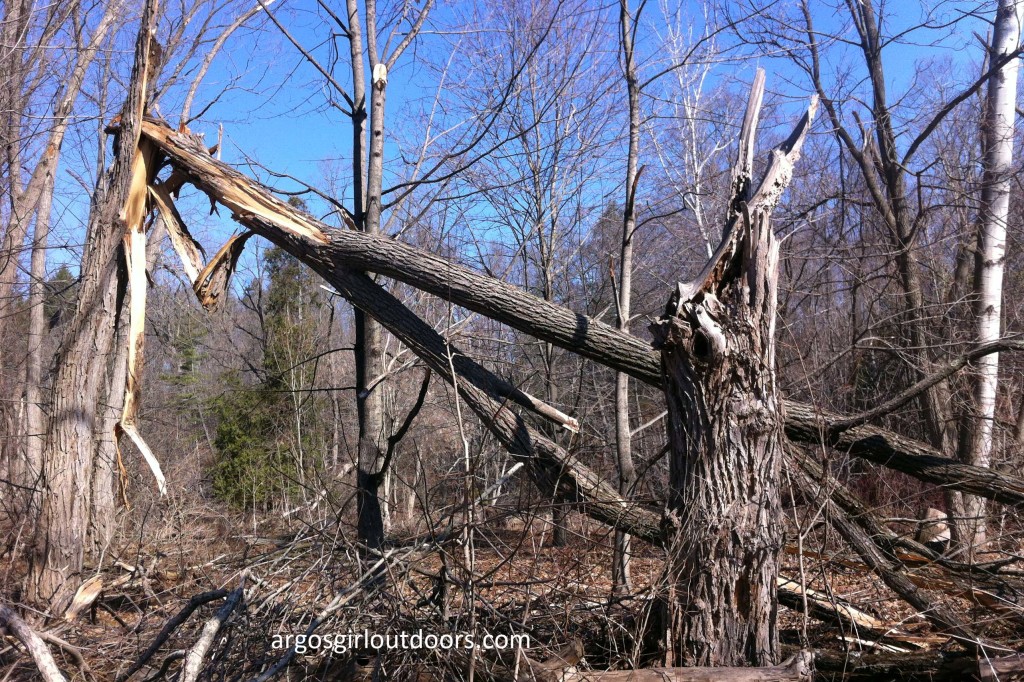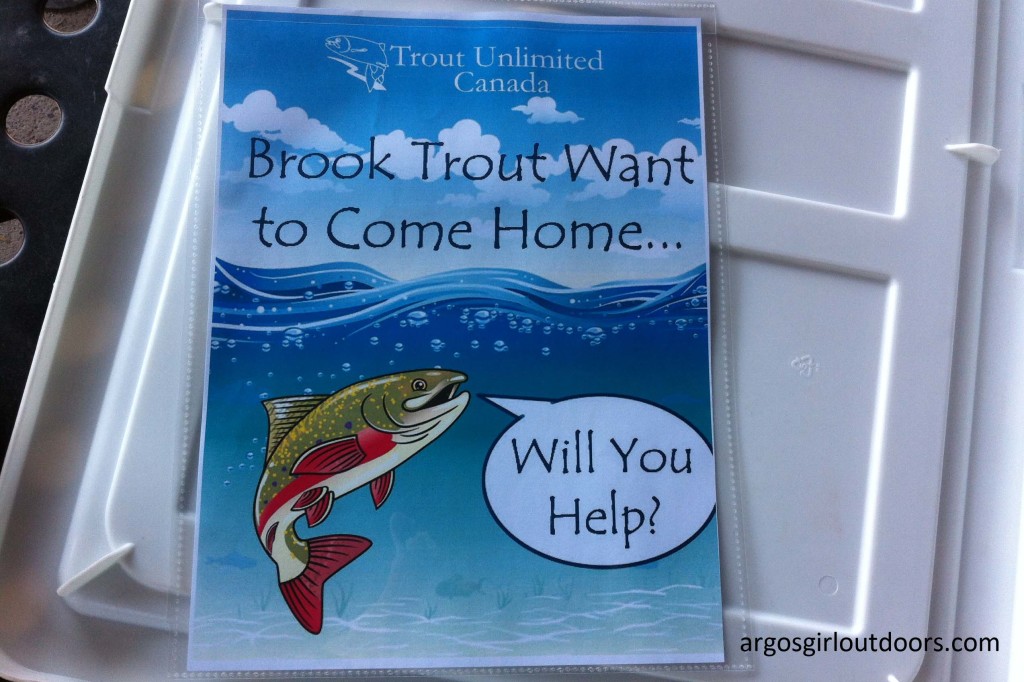Party Time At Lowville Park
This past Saturday was the day when spring officially begins in my books – the first volunteer work day of the season. For the second year in a row, this celebration took place at Lowville Park in Burlington, Ontario, on a perfect spring day. Sunglasses were needed as we gathered around Trout Unlimited Canada’s Beth Anne Fischer, project biologist for the Bronte Creek Watershed Renewal Program, and got direction for the day.
The Bronte Creek Watershed Renewal Program is a large scale project that was chosen as one of five projects Trout Unlimited Canada wanted to initiate across Canada. An impressive amount of stream restoration has occurred in this park, improving the water quality, the quality of fish habitat, and the overall ecosystem function. From man-made riffles to narrowing of the stream and bank stabilization, this stretch of Bronte Creek has been transformed into a much healthier stream than in the past. The best measure of the improvement in this creek was the first documented sightings of brook trout in 55 years. Brook trout are sensitive, coldwater fish. They are often seen to be an indicator of water quality, and certainly water temperature, as they cannot survive in warm streams. To have this native species return to this stretch of river is a major accomplishment.
The first work day of the year in Lowville Park is usually a garbage clean-up. However, the park is well-maintained by city staff, and visitors seem to be conscientious about litter, so there is less to pick up in this park than most others along Bronte Creek. In addition to cleaning up litter, we were asked to record wildlife observations, something that is right up my alley.
Setting out in small groups, Darrell and I worked along the back of the park with another volunteer. While chatting about fishing, the beautiful weather, and what a nice way we chose to spend a Saturday, we headed downstream, with occasional stops to look at the river.
One of my favorite things about returning to Lowville Park is to see how the previous years work has progressed. In 2012 I helped to plant several trees and shrubs, most of which are doing very well, although some are missing altogether. That is to be expected with most plantings. Some of the plants will die, some will break when ice storms cause larger trees to fall on them, and some get removed by people who do not appreciate the ecological service the plants provide. Last spring, we did some live staking, which involved taking cuttings from willows and dogwoods prior to leafing out, and sticking them in the ground. This is an effective and inexpensive way of increasing riparian vegetation and stabilizing the riverbank. I was eager to see how well the cuttings had taken, and I was thrilled to see them thriving in each of the locations we had worked in.
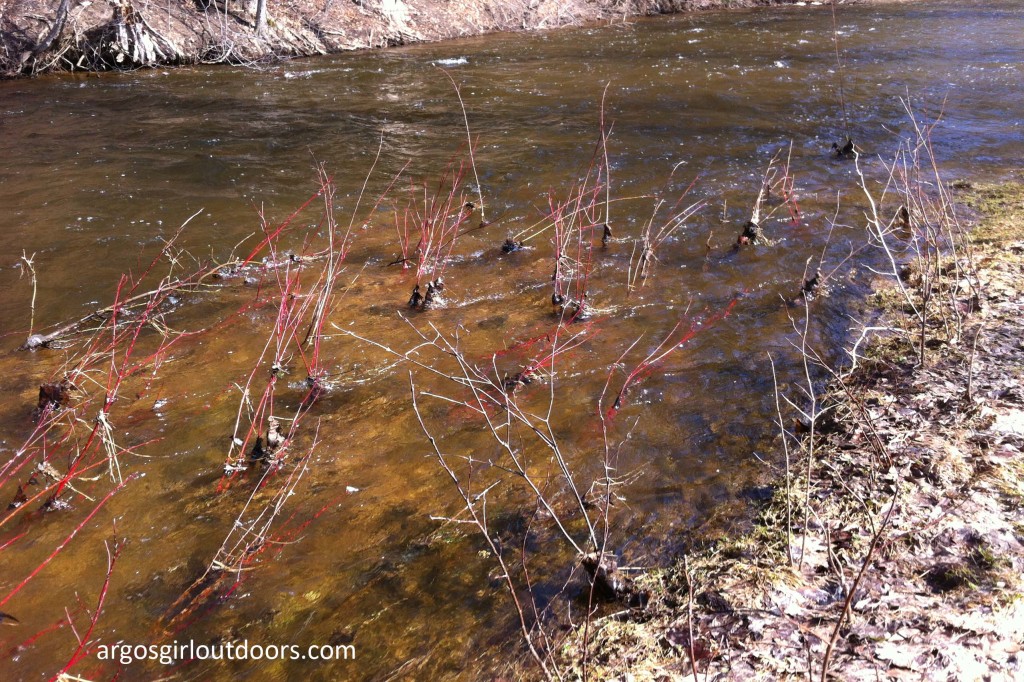
The cuttings have taken root and grown substantially from when they were placed in the ground last spring. You can see how they help to fight erosion by stabilizing the soil and breaking up the water flow.
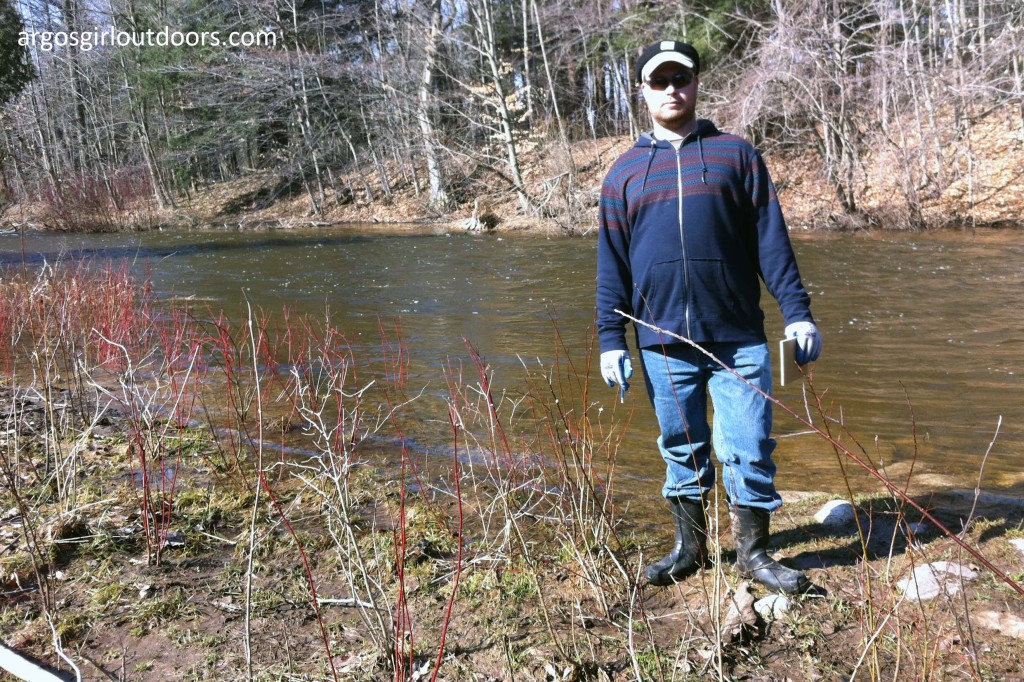
Here’s Darrell standing next to some cuttings for scale. The cuttings were just over a foot long originally, and about 60% of them was pushed into the ground.
When you stop to listen and observe, you realize that Lowville Park really is a hive of activity. We heard sparrows, starlings, crows, robins, white-breasted nuthatches, black-capped chickadees, northern flickers, and more birds that I couldn’t identify. While wandering along the bank of the river, two turkey vultures took up posts in trees on the other side of the water. The breadth of their wingspan always impresses me, and I stood there for a few minutes watching as they took flight, and three other turkey vultures joined them. In a warmer area an eastern gartersnake was sunning itself and moved just in time for me to avoid stepping on it. Squirrels were running from tree to tree, stopping long enough to chirp at me for watching before they raced on. Every creature in the park seemed to be enjoying the morning.
This winter’s ice storm had a major impact on the trees in the park, as evidenced by the downed limbs, twisted trunks, and mangled messes we came across. I was fascinated by one tree that had twisted near the bottom of its trunk, right where you could see some evidence of rot. It was a shame to see the tree stretched out across the grass.
Our final garbage haul was fairly small, but what we did find showed the possibility of one heck of a party at Lowville Park. Beer bottles, fireworks, propane canisters (the small ones used for camp stoves), a flip-flop, used condoms, and more. Several of this items were in a tucked away area behind a mound of dirt. I guess there are several ways to enjoy the park.
Sadly, this is the final year of work in Lowville Park. I say sadly because I’ve really enjoyed going to Lowville for work days, but the fact is, this part of the project has been a resounding success. Trout Unlimited Canada will be posting educational signs within the park this year, but the focus now shifts to the stretch of Bronte Creek running through Courtcliffe Park in Carlisle.
The Brook Trout Want To Come Home project in Courtcliffe Park, is looking to restore this reach of Bronte Creek that has been altered by human activity, making the area unfit for the native brook trout. Judging by their success in Lowville Park, I am confident in the amazing work that TUC will be able to complete at this location. They have already raised $122,000 for the project, but need another $6,000. For a contribution of $20, donors will receive an adorable stuffed brook trout. You know there was no way I could pass up an offer like that!

Beth Anne from TUC processed our donation using the reliable (and old) credit card swiper. I haven’t seen one of those in years! We all had a good laugh about it.
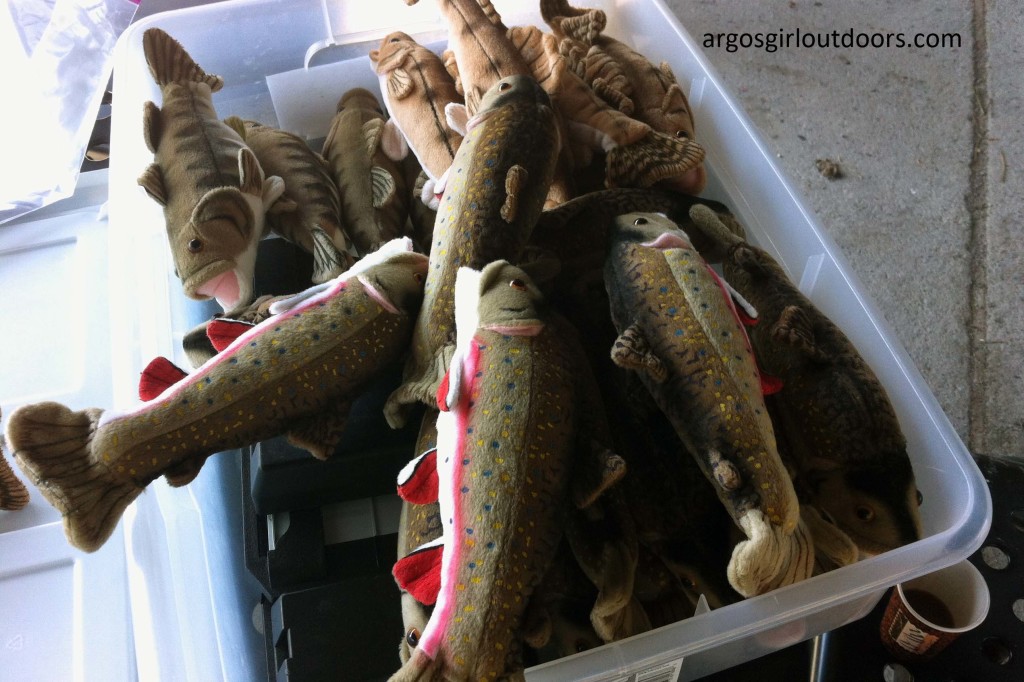
A bucket of brook trout! There were a few other species mixed in there as well. I had to pick up a bass in addition to the brook trout.
It was yet another wonderful outing with TUC, and a great visit to Lowville Park. If you are in the area and have some free time, I encourage you to help out at upcoming Bronte Creek work days in Courtcliffe Park. It is one of the best ways to spend a Saturday morning.
For more information about the Bronte Creek Watershed Renewal Program, and for information on how to donate, check out the program’s website at brontecreekrenewal.blogspot.ca.

